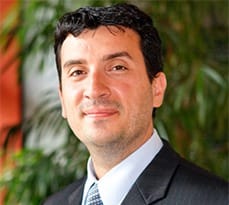 Are you happy to share information with your colleagues? And do they share their valuable information with you? A number of companies have realised that withholding key information within the organisational silos might happen more often that we might like to admit. Now a new study suggests how and when companies should restore meaningful communication across the organisation.
Are you happy to share information with your colleagues? And do they share their valuable information with you? A number of companies have realised that withholding key information within the organisational silos might happen more often that we might like to admit. Now a new study suggests how and when companies should restore meaningful communication across the organisation.

The study reveals that teams across the land are not playing nicely after all. In fact, there are many occasions when we choose not to share information with colleagues if we think it can harm our own prospects of success. And when that information determines, say, the level of funding passed down from a CEO, it can have a significant – and counter-productive – effect on the company as a whole.
“Most organisations must make decisions about where best to allocate resources,” says Cambridge Judge’s Nektarios (Aris) Oraiopoulos, whose research paper “Resource allocation decisions under imperfect evaluation and organizational dynamics”, published in Management Science, examined how these issues play out in the pharmaceutical industry. “Pharmaceutical companies as a whole need to regularly reassess their R&D portfolios and decide which projects have the greatest potential; for example they might choose to improve an existing drug or develop a new one. Such decisions are often made by C-level executives who rely on information provided by the project managers. But individual project managers do not necessarily give accurate information to the boss if they think it will cost them the resources that fund their projects.”

Oraiopoulos’s study, undertaken with Vincent Mak, Director of the MPhil in Strategy, Marketing and Operations at Cambridge Judge, and Professor Jochen Schlapp, at Mannheim University, revealed managers’ likelihood to share information depended on whether there was an appropriate fit between the type of the project (e.g. a new project vs a “me-too” project) and the incentives scheme in place.
“In small companies such as start-ups, there’s often such a strong culture of collective ambition and responsibility – and enhanced risk – that it’s hard to attribute success or failure individually,” says Oraiopoulos. “Therefore the most effective incentive rewards everyone on the basis of the collective success. But as the company grows, people inevitably assume singular responsibilities, the outcomes are less risky and, in the interests of the company, managers start following individual agendas – and management start rewarding individual performance.”
Which is where the problems start. “If two project managers are offered a group incentive for success, individuals are more willing to be upfront about any failings. But when the two project managers compete for resources and rewards, as it often happens in a bigger organisation, project managers are less likely to step aside.”
There are many reasons for this, says Oraiopoulos, not necessarily based in mendacity. “Pharmaceutical research includes many ‘true believers’ – researchers who have absolute faith in a new product, especially if it could cure an important disease. But that faith skews their judgment. They believe their breakthrough is just around the corner, even if all the existing evidence suggests otherwise.”
This is a difficult moral argument for any CEO to reject – a difficulty compounded by the lack of impartial information in such a knowledge-specific industry. “One project manager’s specialty might be a cardiovascular, another’s oncology,” says Oraiopoulos. “No-one knows the science and potential of their product better than they do. They can present an accurate case on why their project deserves resources – or, consciously or subconsciously, mask its failings because no-one has the expertise to challenge them. So how does the CEO tell the difference?”
The answer is trust and giving teams a compelling motivation to be honest. But a collective incentive has drawbacks. “If you’re leading one of five departments who are rewarded only for collective excellence,” says Oraiopoulos, “where’s your motivation? You might as well let the others carry you.”
And even financial incentive doesn’t necessarily work. “Many researchers’ greatest reward is completing their project,” says Oraiopoulos. “That means being consistently confident their boss supports their work.”
So what’s the solution? “Organisations are tackling it in different ways,” he says. “Some are creating smaller, individual units, for example, centres of excellence or turning departments into small start-ups, with defined budgets. Others are promoting more collaboration between departments.”
Swiss global healthcare company Roche did both. When it bought drug developer Genentech in 2009 it kept the two companies’ R&D sections separate, empowering its “late-stage development group” to pick the strongest project – and motivating the losing group by announcing it would develop its plans later. But while that worked with Alzheimer’s treatments, a more linked approach was required for fast-paced developments in cancer research. “The need to understand the biology and right therapeutic approach requires the best minds,” says Roche’s head of oncology Jason Coloma. “We needed to leverage the knowledge in these divisions and break down some of these firewalls.”
The company formed a cancer immunotherapy committee which, says Roche, “brings the leadership and senior scientific minds together to consider different areas of interest and unmet needs that can be fulfilled by looking at different combinations.”
Roche’s approach confirms Oraiopoulos’s findings that new products require a team strategy, while “me-too” projects benefit from more individual approaches. But how to break down a colossal R&D function into start-up-style divisions?
GlaxoSmithKline famously replaced its R&D “pyramid” with 12 centres of excellence. “We learned these centres must be built around two things,” its then CEO Jean-Pierre Garnier said later. “A specific mission – the most effective therapies for Alzheimer’s – and the stage of the R&D process required to perform that mission, for example choosing a target for attacking the disease. Anything not critical to the core R&D process must occur outside the centre. All other functions – toxicology, drug metabolism, formulation, had to become service units, delivering at the lowest possible cost.”
Simultaneously, GSK overhauled its incentives. “Pharma R&D typically pursues two objectives – to be first in class and to offer the best-in-class compound for attacking a validated disease target. For too long the industry has tried to be a ballet dancer and a footballer at the same time.”
But he warned fragmenting a company necessitates commitment. “To operate in this fashion, companies must strengthen opportunities, negotiate deals and nurture external scientific ‘bets’ (work with outside experts). This means a cultural shift. It’s an enormous but necessary task.”
Oraiopoulos’s research suggests there are so many variables – different products, motivations, branches of medicine, organisational goals – that the key thing is to be aware of the problem – each company must then find its own solution. Pfizer’s recent buy-out of Botox maker Allergan is expected to maintain separate divisions for innovative and established treatments, so how the company allocates its resources remains to be seen.
“You must strike a balance,” says Oraiopoulos, “between rewarding individual and group performance. It’s a spectrum and each company must find their place on it, for patients and for the advancement of treatments. Many companies are encountering this challenge. We’re only scratching the surface.”

